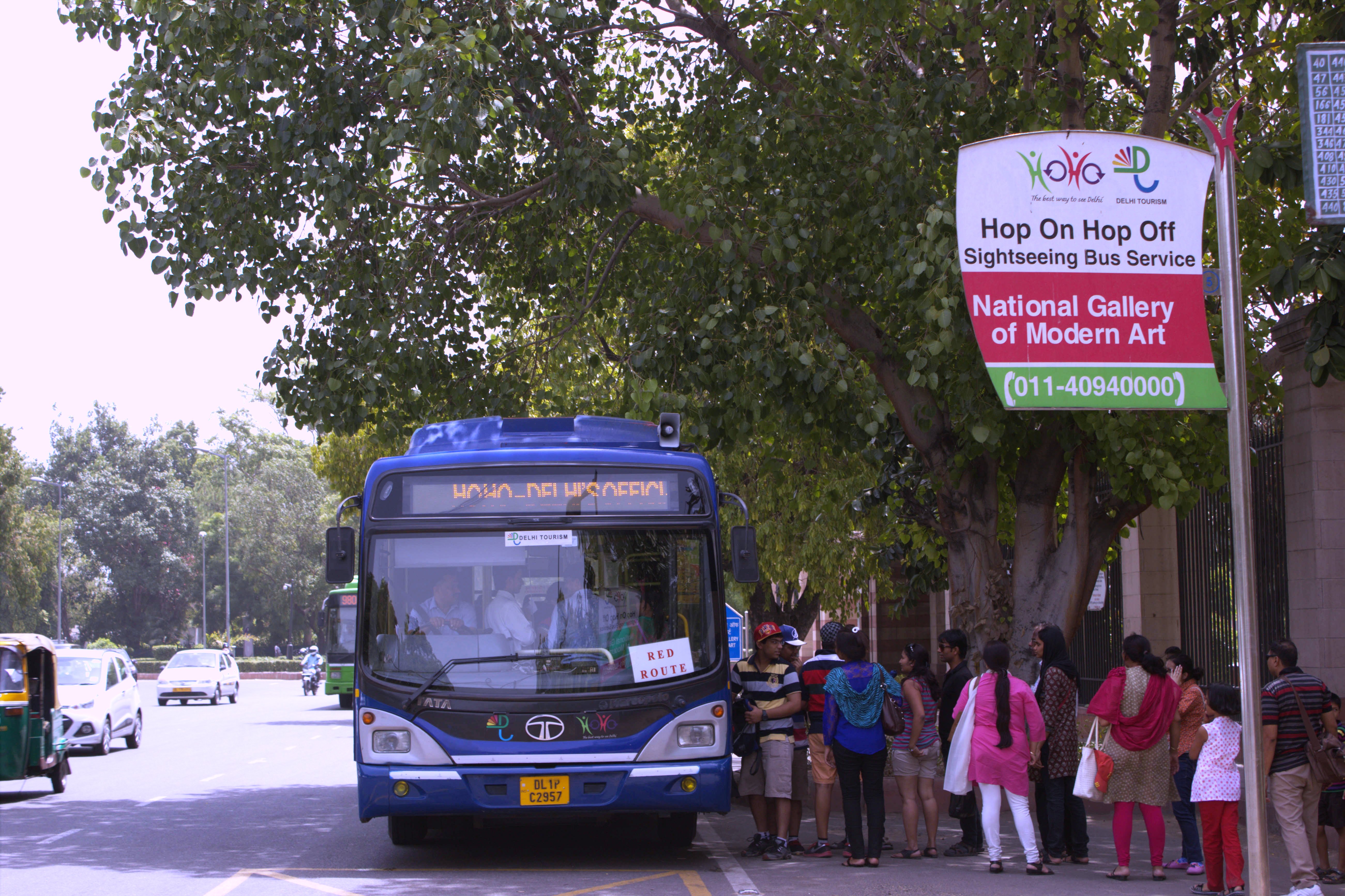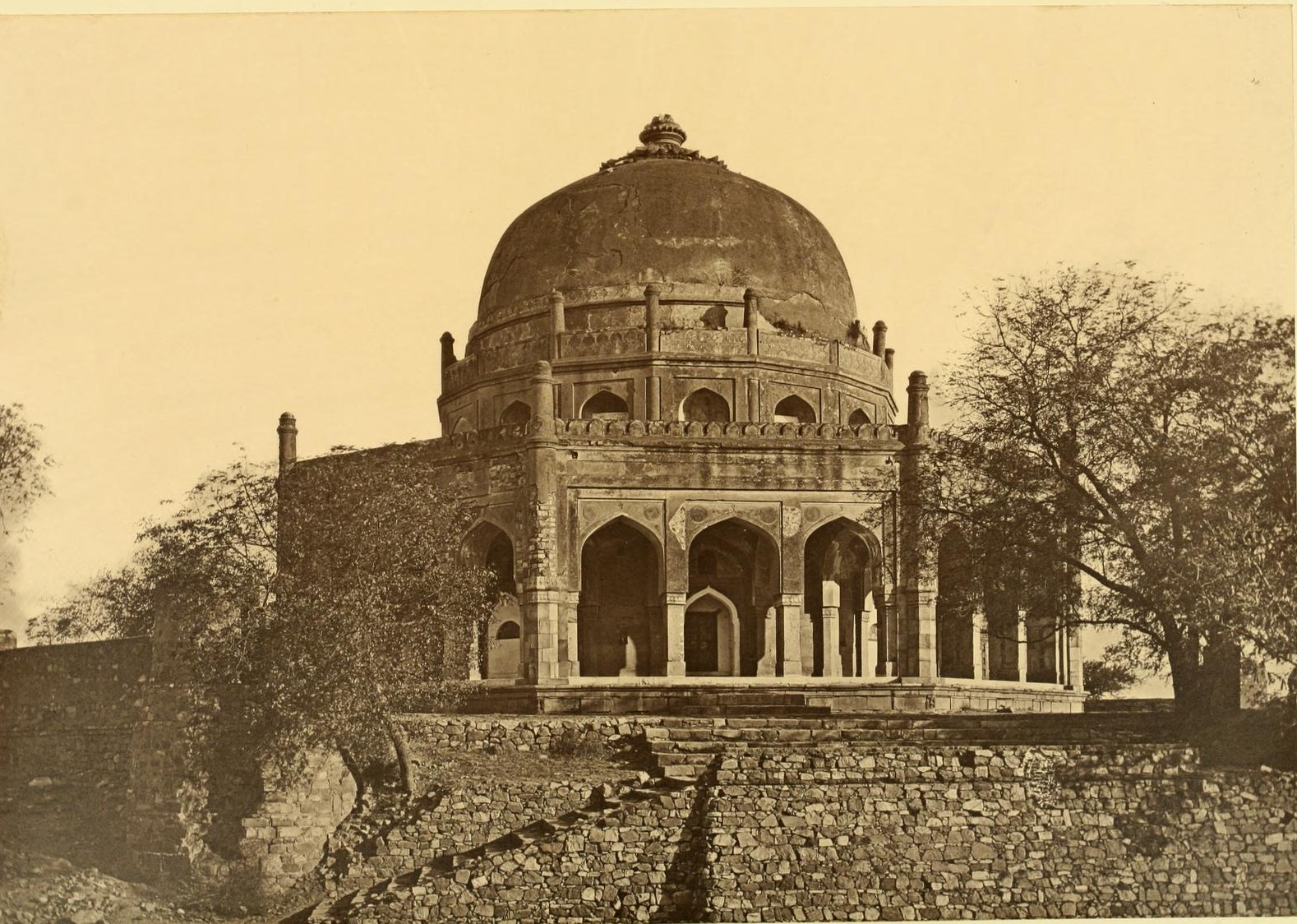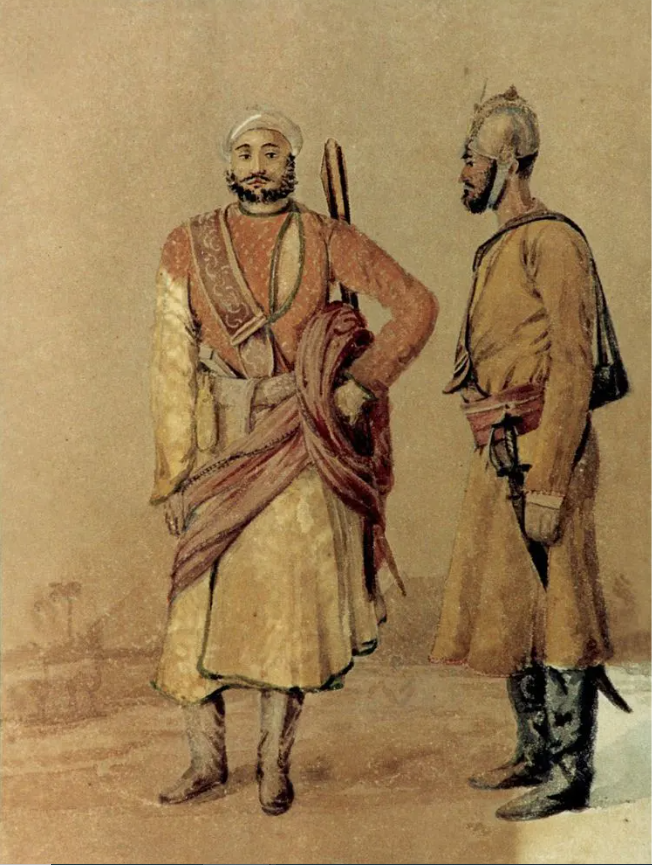|
Mehrauli Archaeological Park
Mehrauli Archaeological Park is an archaeological area spread over 200 acre in Mehrauli, Delhi, adjacent to Qutub Minar World Heritage Site and the Qutb complex. It consists of over 100 historically significant monuments. It is the only area in Delhi known for 1,000 years of continuous occupation, and includes the ruins of Lal Kot built by Tomar Rajputs in 1060 CE, making it the oldest extant fort of Delhi, and architectural relics of subsequent period, rule of Khalji dynasty, Tughlaq dynasty, Lodhi dynasty of Delhi Sultanate, Mughal Empire, and the British Raj. Overview The region contains sites like Tomb of Balban, ca 1287 CE, wherein a true arch and the true dome were built for the first time in India, Jamali Kamali Mosque and Tomb of Maulana Jamali Kamali (Jamali Kamboh), built 1526 - 1535 CE, Quli Khan's Tomb, Gandhak ki Baoli, Rajon Ki Baoli, a stepwell, and Madhi Masjid. Other near by monuments Jahaz Mahal, Zafar Mahal of Bahadur Shah II alias ''Lal Mahal'', Hau ... [...More Info...] [...Related Items...] OR: [Wikipedia] [Google] [Baidu] |
Ruins Of Sir Thomas Metcalfe's Dilkusha With Qutub Minar In The Background 02
Ruins () are the remains of a civilization's architecture. The term refers to formerly intact structures that have fallen into a state of partial or total disrepair over time due to a variety of factors, such as lack of maintenance, deliberate destruction by humans, or uncontrollable destruction by natural phenomena. The most common root causes that yield ruins in their wake are natural disasters, armed conflict, and population decline, with many structures becoming progressively derelict over time due to long-term weathering and scavenging. There are famous ruins all over the world, with notable sites originating from ancient China, the Indus Valley and other regions of ancient India, ancient Iran, ancient Israel and Judea, ancient Iraq, ancient Greece, ancient Egypt, Roman sites throughout the Mediterranean Basin, and Incan and Mayan sites in the Americas. Ruins are of great importance to historians, archaeologists and anthropologists, whether they were once individual fo ... [...More Info...] [...Related Items...] OR: [Wikipedia] [Google] [Baidu] |
Jamali Kamali Mosque And Tomb
Jamali Kamali Mosque and Tomb, located in the Archaeological Village complex in Mehrauli, Delhi, India, comprise two monuments adjacent to each other; one is the mosque and the other is the tomb of Jamali and Kamali. Their names are tagged together as "Jamali Kamali" for the mosque as well as the tomb since they are buried adjacent to each other. The mosque and the tomb were constructed in 1528-1529, and Jamali was buried in the tomb after his death in 1535. Location Mehrauli urban village where the monument is located is approachable from all parts of Delhi by well laid out roads and transport system. The Indira Gandhi International Airport is away and the New Delhi Railway Station and Nizamuddin Railway Station are respectively , and away. Visitors are free to visit the monument on all week days. The nearest metro station is Qutab Minar, which is within walking distance from the mosque. The practice of Friday prayers is barred in such monuments classified by the body un ... [...More Info...] [...Related Items...] OR: [Wikipedia] [Google] [Baidu] |
Balban's Tomb
The Tomb of Ghiyas ud din Balban is located in Mehrauli, New Delhi, India. Built in circa 1287 CE in rubble masonry, the tomb is a building of historical importance in the development of Indo-Islamic architecture, as it was here that first Islamic arch made its appearance in India, and according to many, the first Islamic dome as well, which however hasn't survived, making ''Alai Darwaza'' built in 1311 CE, in the nearby Qutb complex, the earliest surviving dome in India. Ghiyas ud din Balban (1200–1287) was a Turkic ruler of the Delhi Sultanate during the rule of Mamluk dynasty of Delhi (or Slave dynasty) from 1266 to 1287. He was one of the most prominent rulers of the Slave Dynasty. The tomb of Balban was discovered in the mid-20th century. Overview It is an imposing stone and masonry building, though lacking the splendid ornamentation to be seen in the tomb of his master, Iltutmish. The tomb is surrounded by the ruins of an extensive late-medieval settlement and it offe ... [...More Info...] [...Related Items...] OR: [Wikipedia] [Google] [Baidu] |
INTACH
The Indian National Trust for Art and Cultural Heritage (INTACH) is a non-profit charitable organisation registered under the Societies Registration Act, 1860. In 2007, the United Nations awarded INTACH a special consultative status with United Nations Economic and Social Council.INTACH gets special status for its efforts '' The Hindu'', 30 October 2007. History INTACH was founded in 1984 in with the vision to create a membership organisation to stimulate and spearhead heritage awareness and conservation in |
Indian National Trust For Art And Cultural Heritage
The Indian National Trust for Art and Cultural Heritage (INTACH) is a non-profit charitable organisation registered under the Societies Registration Act, 1860. In 2007, the United Nations awarded INTACH a special consultative status with United Nations Economic and Social Council.INTACH gets special status for its efforts '' The Hindu'', 30 October 2007. History INTACH was founded in 1984 in with the vision to create a membership organisation to stimulate and spearhead heritage awareness and conservation in |
Delhi Development Authority
The Delhi Development Authority (DDA) is a planning authority created in 1957 under the provisions of the Delhi Development Act "to promote and secure the development of Delhi". It is responsible for planning, development and construction of housing projects, commercial lands, land management as well as providing public facilities like roads, bridges, drains, underground water reservoirs, community centers, sports centers, green belts etc. within the area of National Capital Territory of Delhi, India. History British Raj The British Raj (; from Hindi language, Hindi ''rāj'': kingdom, realm, state, or empire) was the rule of the British The Crown, Crown on the Indian subcontinent; * * it is also called Crown rule in India, * * * * or Direct rule in India, * Q ... In 1922, a tiny Nazul Office consisting of 10 to 12 officials was set up in the Collectorate of Delhi, which was the first authority to regulate the planned development of the city. In 1937, the office was up ... [...More Info...] [...Related Items...] OR: [Wikipedia] [Google] [Baidu] |
Delhi Tourism And Transportation Development Corporation
Delhi Tourism and Transportation Development Corporation (DTTDC) is an undertaking of the Government of Delhi, India, that was established in December 1975 for the purpose of promoting tourism and related services in the city of Delhi. It has an authorised share capital of Rs. 10.00 crores and a paid up capital of Rs. 6.28 crores. It is involved in several other activities, some of which do not fall under the core activity of promotion of tourism, such as the selling of liquor. This particular activity, however, provides the corporation with revenue that can be utilised in tourism or other related development activities for the National Capital Region of Delhi. The Corporation has Delhi Based firm M/s Rawla & Co. Chartered Accountants as its Statutory Auditors Main activities The main activities of Delhi Tourism can be divided into the following heads. yes Publicity literature The Corporation promotes tourism whether or not the activities provide any short-term benefits in terms ... [...More Info...] [...Related Items...] OR: [Wikipedia] [Google] [Baidu] |
Rose Garden, Mehrauli Archaeological Park
A rose is either a woody perennial flowering plant of the genus ''Rosa'' (), in the family Rosaceae (), or the flower it bears. There are over three hundred species and tens of thousands of cultivars. They form a group of plants that can be erect shrubs, climbing, or trailing, with stems that are often armed with sharp prickles. Their flowers vary in size and shape and are usually large and showy, in colours ranging from white through yellows and reds. Most species are native to Asia, with smaller numbers native to Europe, North America, and northwestern Africa. Species, cultivars and hybrids are all widely grown for their beauty and often are fragrant. Roses have acquired cultural significance in many societies. Rose plants range in size from compact, miniature roses, to climbers that can reach seven meters in height. Different species hybridize easily, and this has been used in the development of the wide range of garden roses. Etymology The name ''rose'' comes from La ... [...More Info...] [...Related Items...] OR: [Wikipedia] [Google] [Baidu] |
Tomb Of Adham Khan
Adham Khan's Tomb is the 16th-century tomb of Adham Khan, a general of the Mughal Emperor Akbar. He was the younger son of Maham Anga, Akbar's wet nurse thus also his foster brother. However, when Adham Khan murdered Akbar’s favourite general Ataga Khan in May 1562, Akbar immediately ordered his execution by defenestration from the ramparts of the Agra Fort. The tomb was built in 1562, and lies to the South-West of the Qutub Minar, Mehrauli, Delhi, immediately before one reaches the town of Mehrauli, it is now a protected monument by Archaeological Survey of India. The tomb is opposite Mehrauli bus terminus and many passengers use it as a place to wait. Architecture It lies on the walls of Lal Kot and rising from a terrace enclosed by an octagonal wall provided with low towers at the corners. It consists of a domed octagonal chamber in the Lodhi Dynasty style and Sayyid dynasty early in the 14th century. It has a verandah on each side pierced by three openings. It i ... [...More Info...] [...Related Items...] OR: [Wikipedia] [Google] [Baidu] |
Hauz-i-Shamsi
Hauz-i-Shamsi (literally "sunny watertank") also called ''Shamshi Talab'' is a water storage reservoir or tank built by Iltutmish of the Slave Dynasty in 1230 CE, at a location revealed to him in a dream by the Islamic prophet Muhammad. A palace called the Jahaz Mahal was built on the eastern edge of the same reservoir during the Lodi dynasty period in the 16th century as a retreat or Inn for use by pilgrims. Also at the edge of ''Hauz'' is the tomb of 17th-century Persian writer in the Mughal court, Abdul-Haqq Dehlavi. The monuments are situated in Mehrauli, Delhi. Legend A popular legend narrated is of Iltumish's dream in which Muhammad directed him to build a reservoir at a particular site. When Iltumish inspected the site the day after his dream, he reported to have found a hoof print of Muhammad's horse. He then erected a pavilion to mark the sacred location and excavated a large tank (reservoir) around the pavilion to harvest rain water. According to Sharma: "A red sto ... [...More Info...] [...Related Items...] OR: [Wikipedia] [Google] [Baidu] |
Bahadur Shah II
Bahadur Shah II, usually referred to by his poetic title Bahadur Shah ''Zafar'' (; ''Zafar'' Victory) was born Mirza Abu Zafar Siraj-ud-din Muhammad (24 October 1775 – 7 November 1862) and was the twentieth and last Mughal Emperor as well as an Urdu poet. He was the second son and the successor to his father, Akbar II, who died on 28 September 1837. He was a titular Emperor, as the Mughal Empire existed in name only and his authority was limited only to the walled city of Old Delhi ( Shahjahanbad). Following his involvement in the Indian Mutiny of 1857, the British exiled him to Rangoon in British-controlled Burma in 1858, after convicting him on several charges. Bahadur Shah Zafar's father, Akbar II, had been imprisoned by the British and he was not his father's preferred choice as his successor. One of Akbar Shah's queens pressured him to declare her son, Mirza Jahangir, as his successor. However, The East India Company exiled Jahangir after he attacked their resident ... [...More Info...] [...Related Items...] OR: [Wikipedia] [Google] [Baidu] |
Zafar Mahal (Mehrauli)
Zafar Mahal, in Mehrauli village, in South Delhi, India, is considered as the last monumental structure built as a summer palace during the fading years of the Mughal era. The building has two components namely, the Mahal or the palace, which was built first by Akbar Shah II in the 18th century, and the entrance gate that was reconstructed in the 19th century by Bahadur Shah Zafar II, popularly known as "Zafar" (the ''nom de plume'' of Bahadur Shah II) meaning ‘Victory’. It has a forlorn history because Bahadur Shah Zafar, who wished to be buried in the precincts of the Zafar Mahal (palace) and the famous Dargah of Khwaja Qutubuddin Bakhtiar Kaki in Mehrauli, Delhi, was deported by the British to Rangoon, after the First War of Indian Independence in 1857, where he died of old age. The monument today is in a neglected and ruined state, locals play cricket and gamble freely inside the protected monument. The 18th-century palace has been all but subsumed by unauthorised cons ... [...More Info...] [...Related Items...] OR: [Wikipedia] [Google] [Baidu] |










